The Spinoza Problem: A Novel by Irvin D. Yalom
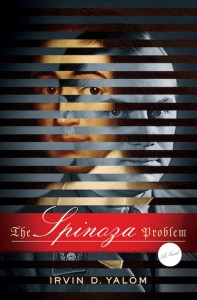 The Spinoza Problem: A Novel: by Irvin D. Yalom– Irvin Yalom is a prominent psychiatrist who is now Professor Emeritus at Stanford Medical School He is a well published author who is known for his outstanding books on group therapy. He also has written books about case histories and relationships, which have been very well received by the public including Love’s Executioner and Staring At the Sun, which addresses death and dying. In addition he has authored a few novels including When Nietzsche Wept and this latest book published in February 2012, The Spinoza Problem.
The Spinoza Problem: A Novel: by Irvin D. Yalom– Irvin Yalom is a prominent psychiatrist who is now Professor Emeritus at Stanford Medical School He is a well published author who is known for his outstanding books on group therapy. He also has written books about case histories and relationships, which have been very well received by the public including Love’s Executioner and Staring At the Sun, which addresses death and dying. In addition he has authored a few novels including When Nietzsche Wept and this latest book published in February 2012, The Spinoza Problem.
This very readable novel will be particularly engrossing to those who have some acquaintance with the philosophy of Spinoza or have chosen to put aside any literal understanding of the bible and question the traditional belief in God. It also will have great appeal to readers who are always drawn to trying to get further insight into how anti-Semitism and Hitler were able to flourish in post World War I Germany leading to the rise of Nazism and World War II.
Yalom acknowledges that he always had been fascinated with Spinoza but could never find a way to write about him since very little was known about his personal and inner life. In the foreword of this book he describes a circumstance, which stimulated an idea, which then allowed him to imagine this novel.
The story starts off by introducing the reader to Baruch Spinoza (nicknamed Benito), a brilliant Talmudic student in Holland and Alfred Rosenberg a student in Germany who runs for President of his College class by making an anti-Semitic speech which gets him called on the carpet by two of the faculty, one of whom is Jewish. Each chapter alternates by following the lives of one of these two young men. Spinoza who lived in the 17th century in Holland becomes ex-communicated by his well-known Rabbi because of his heretic views of the bible and his refusal to accept a belief in God, rejecting both ideas as superstitions. Rosenberg lives in the 20th century and experiences the aftermath of Germany’s humiliating defeat in World War I, becomes a writer and an editor, meets a young Adolph Hitler whom he idolizes and ultimately serves. Although they lived nearly 300 years apart, their connection through Spinoza’s writings resulted in nagging questions which Rosenberg pondered most of his life. These may have unconsciously challenged his deeply held anti-Semitic beliefs. On another level the examination of Spinoza’s deconstruction of a religion based philosophy founded on myths and superstitions highlights the flaws of the deeply held views of Hitler and so many of his followers.
Yalom offers this book as completely factual except for the personal life and inner thoughts of each of the protagonists and the connection that he imagines between the two. There are however some reasons that Yalom has for believing that Rosenberg could have been bothered by the problem that some earlier great German minds valued the writings of “Spinoza the Jew.” The real lives of both men are well known. This includes the details of the ex-communication of Spinoza from his Jewish community and the actual writings of Spinoza. Rosenberg’s life and ultimate death by hanging as a war criminal have been well documented and his views were widely disseminated, as he was an editor of a prominent Nazi newspaper as well as holding other important positions under Hitler.
There are records that show that Rosenberg did spend some time hospitalized in a Psychiatric Clinic during his Nazi years. Yalom creates therapy sessions between Rosenberg and a made up German psychiatrist who is not sympathetic to his vision. Yalom obviously does this, as he imagined the method in which he would approach Rosenberg if he were his psychiatrist.
Another made up character is Franco who is depicted as a friend and follower of Spinoza, who believes that Judaism should be changed from the inside rather than completely discarded in place of a new philosophical view of God as Nature, which was Spinoza’s view. This character becomes a Rabbi and plans to leave Europe and come to the New World and found a new religion. In the epilog of the book Yalom suggests that he was making a reference to Mordecai Kaplan a 20th century pioneer of modernized and secularized Judaism known as the Reconstruction movement in the U.S. (although Kaplan’s trajectory was somewhat different than the character in the book).
Also in the epilog of the book Yalom quotes the wisdom that, History is fiction that happens. Fiction is history that might have happened.
This novel successfully weaves the two together in a stimulating, thought provoking and quite enjoyable novel.

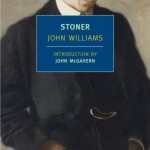

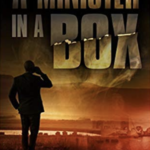





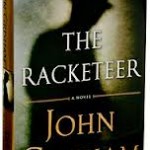




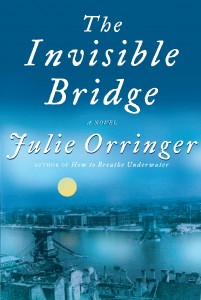 If
If  This book is a fictional story narrated in the first person by someone who spends most of his life in a setting that most of us would not expect to identify with or relate to. That is growing up on the grounds of a hospital in Eithopia with one’s identical twin and loving adoptive Indian parents who are physicians along with the dedicated servant staff including the daughter of one them who is your age. You only know that your biological mother was a nun who died in childbirth and your biological father was a brilliant surgeon at the hospital who fled the country after an abortive effort of crushing the skull of your identical twin in order to try to extract him in a stalled delivery prior to you and your brother ultimately being saved through a Caesarian section performed by your soon to be adoptive father who was internist. Shortly thereafter your adoptive fathers would marry your adoptive mother who was the Ob-Gyn physician at the hospital who happened to be out of the country at the time of the tragic circumstances of the beginning of you and your brother’s life. As unique as all these circumstances seem to be, the subsequent issues in the life of the narrator while unusual are things that do happen in the course of human events and become powerful determinants of one’s life story. Despite being identical twins, the narrator’s brother seems to be on the “autism spectrum”, talking at a late age and usually saying very little, having minimal capacity for experiencing and expressing interpersonal emotions, although being objective to the point of ultimately developing an interest and a single minded obsession in women’s fistulas which leads him to wide recognition for his knowledge and advocacy in this arena . His directness as a young man leads him to a sexual experience with the daughter of the household servant which sets off a crescendo of events that go on through a lifetime of the characters in this book. As is so often the case of lives and events, each intersection makes a change which will be so important in another significant event which will change another one. One misunderstanding or missed opportunity has set up a future event, which will forever change one’s life. Because the author has chosen to follow his characters for significant portions of their life cycle we come to know them in great depth so we empathize with most of them in a very meaningful way. We do pay a price for this depth of knowledge and understanding of the characters as the author has intertwined his narrative with endless detail about external events of climate, vegetation and seemingly unrelated incidental thoughts of the characters. I had to fight my obsessive style of not skipping sentences or paragraphs in a book as I usually deplore the style, which skims ahead for dialog or events in a wordy book although at times I lost this battle. The final reward for reading this book is an insight into one family and a glimpse of life in Ethiopia during the regime of Halle Sal isse as well as a little bit of the feel of the revolution which disposed him . The author being a physician also writes in great detail (sometimes more than you need) about the medical issues of the people who come to the hospital and as well those of some of the characters whom you have come to care bout. He also blends in some ethical dilemmas which not only challenged the characters but will most likely fascinate the reader. In the end the reader has taken a meaningful journey with the narrator and the people close to him and you cannot help but feel you are the richer for it.
This book is a fictional story narrated in the first person by someone who spends most of his life in a setting that most of us would not expect to identify with or relate to. That is growing up on the grounds of a hospital in Eithopia with one’s identical twin and loving adoptive Indian parents who are physicians along with the dedicated servant staff including the daughter of one them who is your age. You only know that your biological mother was a nun who died in childbirth and your biological father was a brilliant surgeon at the hospital who fled the country after an abortive effort of crushing the skull of your identical twin in order to try to extract him in a stalled delivery prior to you and your brother ultimately being saved through a Caesarian section performed by your soon to be adoptive father who was internist. Shortly thereafter your adoptive fathers would marry your adoptive mother who was the Ob-Gyn physician at the hospital who happened to be out of the country at the time of the tragic circumstances of the beginning of you and your brother’s life. As unique as all these circumstances seem to be, the subsequent issues in the life of the narrator while unusual are things that do happen in the course of human events and become powerful determinants of one’s life story. Despite being identical twins, the narrator’s brother seems to be on the “autism spectrum”, talking at a late age and usually saying very little, having minimal capacity for experiencing and expressing interpersonal emotions, although being objective to the point of ultimately developing an interest and a single minded obsession in women’s fistulas which leads him to wide recognition for his knowledge and advocacy in this arena . His directness as a young man leads him to a sexual experience with the daughter of the household servant which sets off a crescendo of events that go on through a lifetime of the characters in this book. As is so often the case of lives and events, each intersection makes a change which will be so important in another significant event which will change another one. One misunderstanding or missed opportunity has set up a future event, which will forever change one’s life. Because the author has chosen to follow his characters for significant portions of their life cycle we come to know them in great depth so we empathize with most of them in a very meaningful way. We do pay a price for this depth of knowledge and understanding of the characters as the author has intertwined his narrative with endless detail about external events of climate, vegetation and seemingly unrelated incidental thoughts of the characters. I had to fight my obsessive style of not skipping sentences or paragraphs in a book as I usually deplore the style, which skims ahead for dialog or events in a wordy book although at times I lost this battle. The final reward for reading this book is an insight into one family and a glimpse of life in Ethiopia during the regime of Halle Sal isse as well as a little bit of the feel of the revolution which disposed him . The author being a physician also writes in great detail (sometimes more than you need) about the medical issues of the people who come to the hospital and as well those of some of the characters whom you have come to care bout. He also blends in some ethical dilemmas which not only challenged the characters but will most likely fascinate the reader. In the end the reader has taken a meaningful journey with the narrator and the people close to him and you cannot help but feel you are the richer for it. On the same day as I started writing this review, I heard a report on NPR of a group of Saudi women who are protesting the law in their country that women can’t drive a car and must be driven around by men or take a taxi. The subjugation of women in Saudi Arabia and other Moslem countries was the underlying theme of this novel
On the same day as I started writing this review, I heard a report on NPR of a group of Saudi women who are protesting the law in their country that women can’t drive a car and must be driven around by men or take a taxi. The subjugation of women in Saudi Arabia and other Moslem countries was the underlying theme of this novel 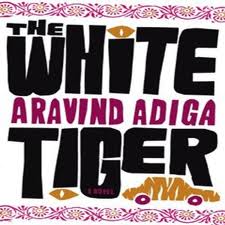
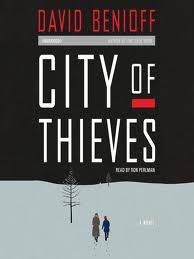 I read 90% of this book in one sitting on an airplane flying back to Los Angeles from China. So I obviously found it engrossing and it held my interest. Therefore I appreciate that it was recommended and made my flight easier. Having said that I do feel that if I am reading another heart wrenching story with painful graphic details of how innocent men women and children died as result of the Nazi’s during World War II, I would like it to have some new enlightening aspects of this history which will shed some fresh ideas on this atrocity, which I didn’t really find in this book Granted we did lean about horrible deaths often due to starvation and freezing temperatures as well as grisly murders for human food all due to the siege of Leningrad, in addition to the direct murder by the Nazis. While it is conceivable that some of the fanciful details how death was missed and survival occurred, may very well have happened to some people, our main characters seem to mostly have a string of good luck embodying an unusual amount of fortunate events. Perhaps the author was trying to have his cast represent many of the unusual, unbelievable and yet heroic things that the people of this beleaguered city had done. There also was a recurrent theme which seemed to be playing off the words and writings of various Russian writers, which might have been more interesting and coherent if I were familiar with these authors, which I am not. I did get the point that Koyla, the Russian deserter was whistling a happy tune because he was afraid himself and that his quoting the so called novel that his young friend never read, was actually from the novel which he hoped to write himself. However, all these references to Russian authors must have had some additional significance. Finally the author did something that I did not like. When Vika, the sharp shooting partisan decides to go her own way and depart from the the other two main characters, the narrator who is the young boy smitten with her ( who is supposed to be the authors grandfather telling him the story of his youth states, I knew I would never see her again. This is the author writing off this character which he basically restates in the next paragraph when he writes …and if the mystics are right and we are doomed to repeat our squalid lives ad infinitum, at least I will always return to that kiss. The character did not say I believed she was gone, he said I knew I would never see her again. Therefore when she reappears for the happy ending I was not only very surprised but I felt tricked with an unacceptable literary device. So in conclusion, while the book held my interest and will probably make a great movie, however for all of the above reasons, I give it thumbs down.
I read 90% of this book in one sitting on an airplane flying back to Los Angeles from China. So I obviously found it engrossing and it held my interest. Therefore I appreciate that it was recommended and made my flight easier. Having said that I do feel that if I am reading another heart wrenching story with painful graphic details of how innocent men women and children died as result of the Nazi’s during World War II, I would like it to have some new enlightening aspects of this history which will shed some fresh ideas on this atrocity, which I didn’t really find in this book Granted we did lean about horrible deaths often due to starvation and freezing temperatures as well as grisly murders for human food all due to the siege of Leningrad, in addition to the direct murder by the Nazis. While it is conceivable that some of the fanciful details how death was missed and survival occurred, may very well have happened to some people, our main characters seem to mostly have a string of good luck embodying an unusual amount of fortunate events. Perhaps the author was trying to have his cast represent many of the unusual, unbelievable and yet heroic things that the people of this beleaguered city had done. There also was a recurrent theme which seemed to be playing off the words and writings of various Russian writers, which might have been more interesting and coherent if I were familiar with these authors, which I am not. I did get the point that Koyla, the Russian deserter was whistling a happy tune because he was afraid himself and that his quoting the so called novel that his young friend never read, was actually from the novel which he hoped to write himself. However, all these references to Russian authors must have had some additional significance. Finally the author did something that I did not like. When Vika, the sharp shooting partisan decides to go her own way and depart from the the other two main characters, the narrator who is the young boy smitten with her ( who is supposed to be the authors grandfather telling him the story of his youth states, I knew I would never see her again. This is the author writing off this character which he basically restates in the next paragraph when he writes …and if the mystics are right and we are doomed to repeat our squalid lives ad infinitum, at least I will always return to that kiss. The character did not say I believed she was gone, he said I knew I would never see her again. Therefore when she reappears for the happy ending I was not only very surprised but I felt tricked with an unacceptable literary device. So in conclusion, while the book held my interest and will probably make a great movie, however for all of the above reasons, I give it thumbs down.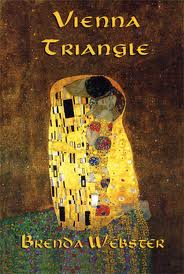 Vienna Triangle
Vienna Triangle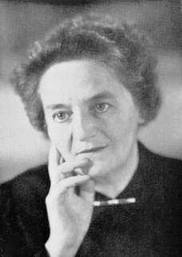 The year is 1968. Helene Deutsch is 84 and, while vacationing in Provincetown, Massachusetts, meets Kate, a young woman who, by coincidence, is writing her PhD thesis at Columbia University about the early women analysts. Dr. Deutsch is one of the most prominent, well-known and respected early women psychoanalysts and who had been in analysis with Sigmund Freud himself. One thing leads to another and in the course of their now mentoring relationship Kate uncovers some previously hidden documents belonging to her mother and which shed light on a family secret that her mother had withheld from her. This secret was that her maternal grandfather was the well-known psychoanalyst Victor Tausk who had been part of Freud’s inner circle and who had committed suicide.
The year is 1968. Helene Deutsch is 84 and, while vacationing in Provincetown, Massachusetts, meets Kate, a young woman who, by coincidence, is writing her PhD thesis at Columbia University about the early women analysts. Dr. Deutsch is one of the most prominent, well-known and respected early women psychoanalysts and who had been in analysis with Sigmund Freud himself. One thing leads to another and in the course of their now mentoring relationship Kate uncovers some previously hidden documents belonging to her mother and which shed light on a family secret that her mother had withheld from her. This secret was that her maternal grandfather was the well-known psychoanalyst Victor Tausk who had been part of Freud’s inner circle and who had committed suicide.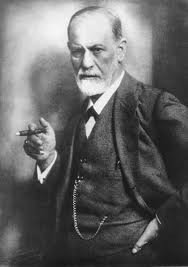 Author Brenda Webster uses this plot in her novel to explore and describe life in Vienna and the complicated interactions both inside and outside of Freud’s Inner Circle during the birth of psychoanalysis. The personalities of the cast of characters unfold. Freud the creator, the father figure, is portrayed as extremely protective of his newly developed “baby.” Tausk is described as a brilliant young man who is making important contributions to psychoanalysis but who feels he is not quite appreciated by the Master. He develops a love affair with Salome who at the same time has become one of Freud’s favorite pupils. Young Helene Deutsch is making her own contributions about psychoanalytic theory and women at the same time that she is having her own love affairs. Freud does not grant Tausk’s request to be analyzed by him and instead refers him for analysis to Deutsch. There is a question about whether Freud’s harsh and rejecting treatment of Tausk contributed to his decision to take his life. Documents that purport to show Freud’s reaction to his junior colleague’s suicide do not paint a flattering picture of the leader of the psychoanalytic movement.
Author Brenda Webster uses this plot in her novel to explore and describe life in Vienna and the complicated interactions both inside and outside of Freud’s Inner Circle during the birth of psychoanalysis. The personalities of the cast of characters unfold. Freud the creator, the father figure, is portrayed as extremely protective of his newly developed “baby.” Tausk is described as a brilliant young man who is making important contributions to psychoanalysis but who feels he is not quite appreciated by the Master. He develops a love affair with Salome who at the same time has become one of Freud’s favorite pupils. Young Helene Deutsch is making her own contributions about psychoanalytic theory and women at the same time that she is having her own love affairs. Freud does not grant Tausk’s request to be analyzed by him and instead refers him for analysis to Deutsch. There is a question about whether Freud’s harsh and rejecting treatment of Tausk contributed to his decision to take his life. Documents that purport to show Freud’s reaction to his junior colleague’s suicide do not paint a flattering picture of the leader of the psychoanalytic movement.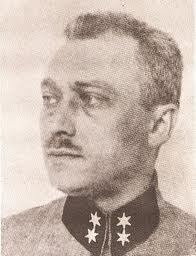 The characters in this book are interesting and well developed. There is love, romance, jealousy, rivalry, narcissism, loyalty, rejection, dedication to the cause, and the mysterious suicide of Tausk that contribute to making this a fine novel. It is a page-turner (or in my case a button pusher – I read books on the Kindle). This book should have strong appeal to all students of psychoanalytic and psychodynamic theory. It is well known that to fully grasp all of these ideas you need to go back to the streets of Vienna and the lives of the people who were bringing forth this revolutionary new understanding of human behavior.
The characters in this book are interesting and well developed. There is love, romance, jealousy, rivalry, narcissism, loyalty, rejection, dedication to the cause, and the mysterious suicide of Tausk that contribute to making this a fine novel. It is a page-turner (or in my case a button pusher – I read books on the Kindle). This book should have strong appeal to all students of psychoanalytic and psychodynamic theory. It is well known that to fully grasp all of these ideas you need to go back to the streets of Vienna and the lives of the people who were bringing forth this revolutionary new understanding of human behavior.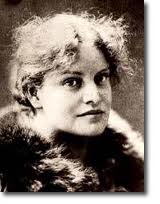 In the author’s afterword she further elaborates that an important letter mentioned in the book from Freud to Andreas-Salome after Tausk’s suicide is genuine, as are her responses to it. (This is one of the documents to which I referred to above.) Webster also cites Kurt Eissler’s writings that she says defended Freud’s treatment of Tausk. This suggests that she made efforts to found the main premise of the book on as much fact as possible.
In the author’s afterword she further elaborates that an important letter mentioned in the book from Freud to Andreas-Salome after Tausk’s suicide is genuine, as are her responses to it. (This is one of the documents to which I referred to above.) Webster also cites Kurt Eissler’s writings that she says defended Freud’s treatment of Tausk. This suggests that she made efforts to found the main premise of the book on as much fact as possible. BW: I had written two previous books of psychoanalytic criticism and a memoir chronicling my history in therapy and had no intention of doing more. Then one day I was reading about how the great Goethe sucked the life out of people close to him and used them for his own purposes. This made me think of Freud and Viktor Tausk. I wondered if genius couldn’t tolerate the existence of great talent in its vicinity and I was off and running.
BW: I had written two previous books of psychoanalytic criticism and a memoir chronicling my history in therapy and had no intention of doing more. Then one day I was reading about how the great Goethe sucked the life out of people close to him and used them for his own purposes. This made me think of Freud and Viktor Tausk. I wondered if genius couldn’t tolerate the existence of great talent in its vicinity and I was off and running.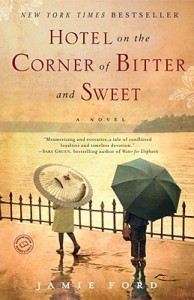 Prior to reading this book, I had recently read Shanghai Girls by Lisa See which is about two Chinese sisters and chronicles their lives from the horror of the Japanese invasion in China to the painful unfair discrimination which they encountered in this country during and after World War II.
Prior to reading this book, I had recently read Shanghai Girls by Lisa See which is about two Chinese sisters and chronicles their lives from the horror of the Japanese invasion in China to the painful unfair discrimination which they encountered in this country during and after World War II. 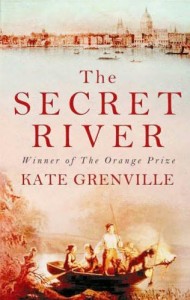 It is a well known fact that Australia was originally settled primarily by convicts who were shipped there by the Bristish government in the 18th and early 19th century.
It is a well known fact that Australia was originally settled primarily by convicts who were shipped there by the Bristish government in the 18th and early 19th century.